Community ain't what it used to be: neighborhood challenges to churches and schools (part 2)

Posted July 3, 2008 at 1:11PM
Yesterday I wrote about a seemingly endless series of challenges to development activities, even relatively minor ones, proposed by churches and schools in and around my neighborhood. This bothers me because, if we are experiencing hostility between neighbors and even our most basic community institutions, the viability of multi-functional, sustainable neighborhoods and cities is called into question.
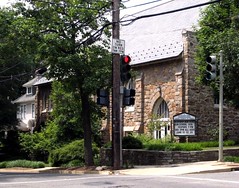 While I don’t believe that nonprofits deserve a carte blanche to do anything they want without being questioned, my perception is that there is a level of distrust and defensiveness in these cases that is out of proportion to what is being proposed. And, frankly, it seems most prevalent in upscale neighborhoods. I don’t think it is a coincidence that some of the greatest success stories concerning development within communities, sometimes with faith-based support, have occurred in recently downtrodden or relatively modest areas like Dudley Street in Boston, Old North in St. Louis, and Geeensburg, Kansas.
While I don’t believe that nonprofits deserve a carte blanche to do anything they want without being questioned, my perception is that there is a level of distrust and defensiveness in these cases that is out of proportion to what is being proposed. And, frankly, it seems most prevalent in upscale neighborhoods. I don’t think it is a coincidence that some of the greatest success stories concerning development within communities, sometimes with faith-based support, have occurred in recently downtrodden or relatively modest areas like Dudley Street in Boston, Old North in St. Louis, and Geeensburg, Kansas.
I don’t think it has always been this way. Are we as a society less communal and less trusting, more defensive than we used to be? If so, why?
I have a few theories. First, air conditioning. I’m serious. It makes more people spend more time indoors than we did, say, 50 years ago, which means less interaction. How many people sit on their front porches in the evenings now, if they even have them, in wealthy neighborhoods? Second, our addiction to automobiles. 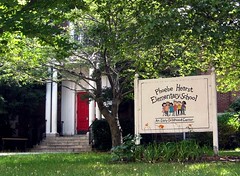 As my co-author Don Chen memorably wrote in our 1999 book Once There Were Greenfields, some people, particularly in low-density suburbs, “tend to interact with their neighbors mainly through their windshields.”
As my co-author Don Chen memorably wrote in our 1999 book Once There Were Greenfields, some people, particularly in low-density suburbs, “tend to interact with their neighbors mainly through their windshields.”
And, of course, we’re a more mobile society in other ways, too, with communities being more transient than they used to be.
Whatever the reasons, there has been a decided downturn in Americans’ affinity with both churches and schools. In his classic book Bowling Alone: the Collapse and Revival of American Community, Robert Putnam notes that, although the US continues to have more houses of worship per capita than any other nation on earth, “religious sentiment in America seems to be becoming somewhat less tied to institutions and more self-defined.” Weekly churchgoing remains popular in the US but has declined over the last half-century, as has church membership.
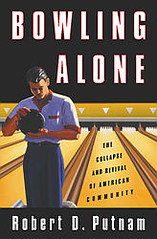 With respect to schools, Putnam notes that “participation in parent-teacher organizations has dropped drastically over the last generation, from more than 12 million in 1964 to barely 5 million in 1982 before recovering to approximately 7 million” in 1995. Putnam also uses survey data to document declining socializing with neighbors and the declining portion of people who say that “most people can be trusted,” which had fallen sharply to below 40 percent by the mid-1990s.
With respect to schools, Putnam notes that “participation in parent-teacher organizations has dropped drastically over the last generation, from more than 12 million in 1964 to barely 5 million in 1982 before recovering to approximately 7 million” in 1995. Putnam also uses survey data to document declining socializing with neighbors and the declining portion of people who say that “most people can be trusted,” which had fallen sharply to below 40 percent by the mid-1990s.
In my youth, neighbors were more accepting, I believe, because they were usually among those who attended the nearby churches and schools, or were friends with people who did. Today, given the decline in identification with these institutions, and decline in neighborhood social ties, neighbors see the local churches and schools not as part of their own kind but as other people, at best representative of a minority in the neighborhood. They are much less inclined to give the benefit of the doubt.
I also think that, at least with regard to neighborhood defensiveness with regard to development activities, including those undertaken by churches and schools, we in the environmental movement have played a role. For good reasons, beginning in the 1970s we created a system of laws and procedures, and a culture, that over time has made it relatively easy to challenge proposed development of all types, and to defeat proposals or delay them until proponents give up. People now consider it their right to fight proposed development wherever and whenever it occurs, and it has become an expectation in many places.
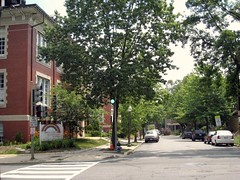 While there are important reasons to be glad for this – many, many bad projects have been halted because of environmental challenges, some of them litigated by yours truly – I think that, as the creators of this system, we now bear some responsibility for making sure that it is not abused. It is time for us as a movement to become more discriminating in what we challenge and what we applaud, and to speak more publicly and forcefully for as well as against things. Indeed, I believe it is irresponsible of us to say no without also indicating what would prompt us to say yes. We also must challenge those who oppose environmentally benign or beneficial projects in our name.
While there are important reasons to be glad for this – many, many bad projects have been halted because of environmental challenges, some of them litigated by yours truly – I think that, as the creators of this system, we now bear some responsibility for making sure that it is not abused. It is time for us as a movement to become more discriminating in what we challenge and what we applaud, and to speak more publicly and forcefully for as well as against things. Indeed, I believe it is irresponsible of us to say no without also indicating what would prompt us to say yes. We also must challenge those who oppose environmentally benign or beneficial projects in our name.
Many of my colleagues at NRDC agree and are now vigorously advocating reasonable, pragmatic solutions to our environmental problems. I’ve asked NRDC’s top leadership and our communications team to join our smart growth program in helping our constituency tell the difference between good development projects and bad, and to help them speak in favor when they are good. That is certainly what this blog will stand for.
Back in the neighborhood, it is a long walk, about a mile, from my house to what is without a doubt the greatest asset in our portion of the city: Washington National Cathedral. 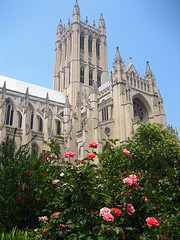
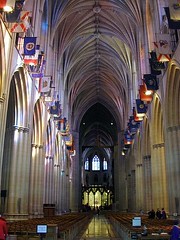 The foundation stone was laid in 1907 and it took 83 years to build. No matter what your religious or social affinity, you’d be hard pressed not to be moved and inspired by its majesty. Renters and homebuyers pay a considerable premium for being located nearby, especially if they have a view. The cathedral, one of the world’s largest, opens its doors to people of all faiths as they gather to worship and pray, to mourn the passing of world leaders, and to confront the pressing moral and social issues of the day. I can’t imagine our city without it.
The foundation stone was laid in 1907 and it took 83 years to build. No matter what your religious or social affinity, you’d be hard pressed not to be moved and inspired by its majesty. Renters and homebuyers pay a considerable premium for being located nearby, especially if they have a view. The cathedral, one of the world’s largest, opens its doors to people of all faiths as they gather to worship and pray, to mourn the passing of world leaders, and to confront the pressing moral and social issues of the day. I can’t imagine our city without it.
We are lucky that construction began a century ago. Would Washington National Cathedral be allowed in its neighborhood if it were proposed today?
Read part 1 of this two-part essay here.
Move your cursor over the images for credit information.